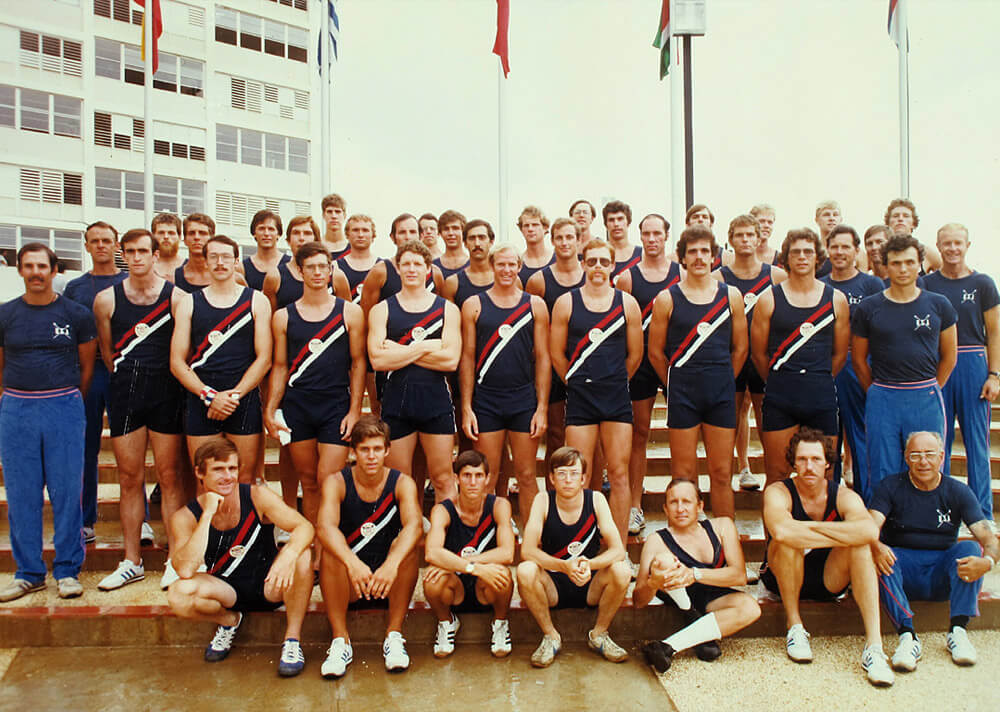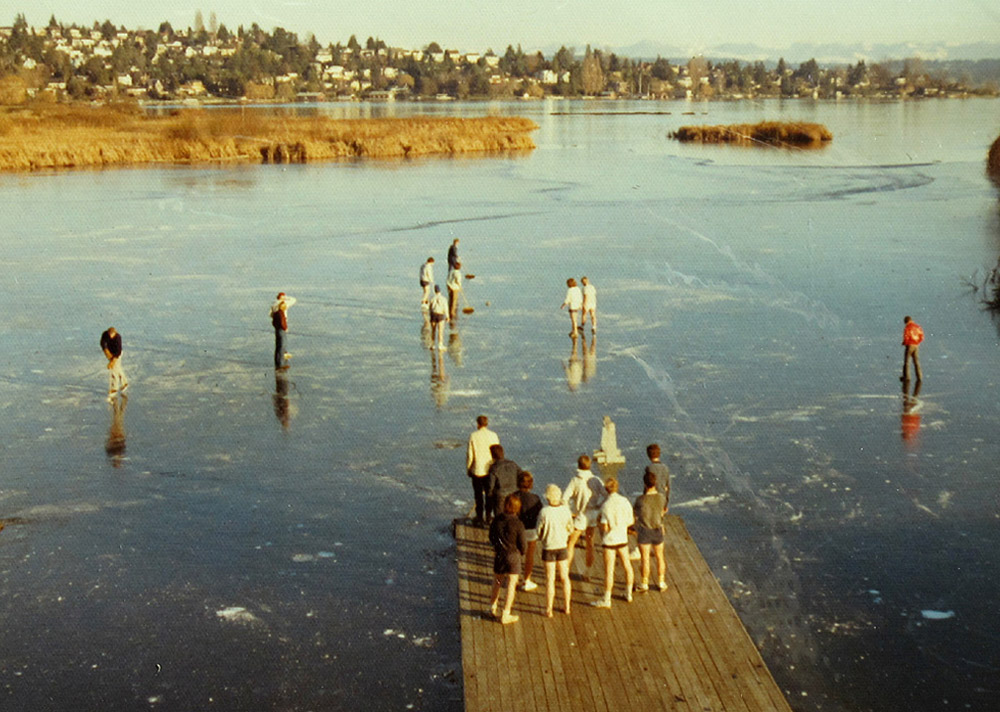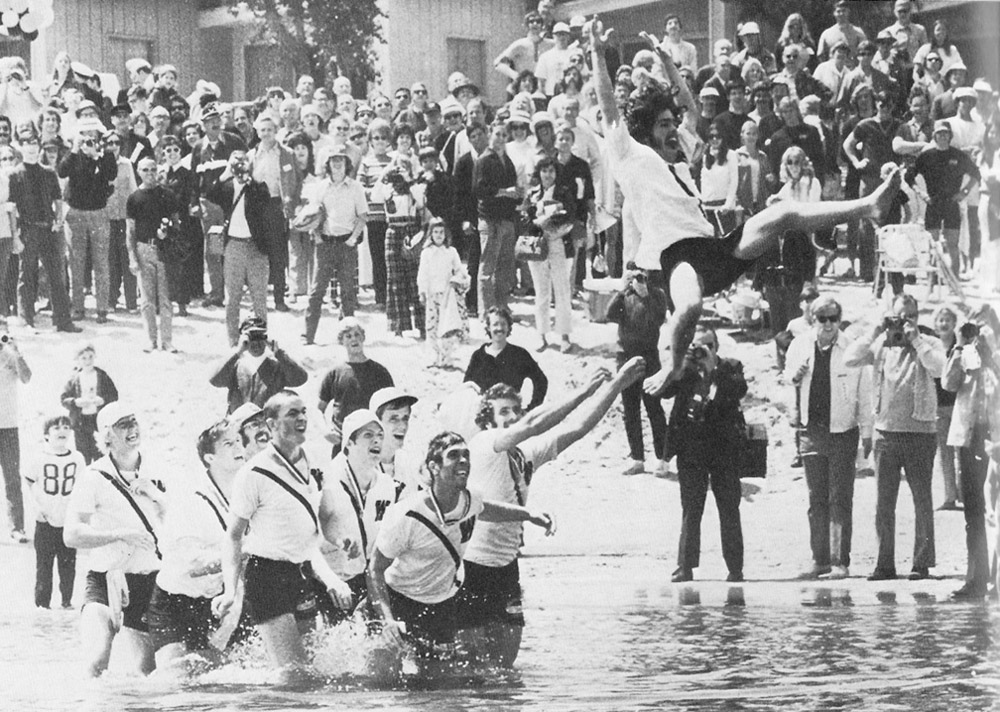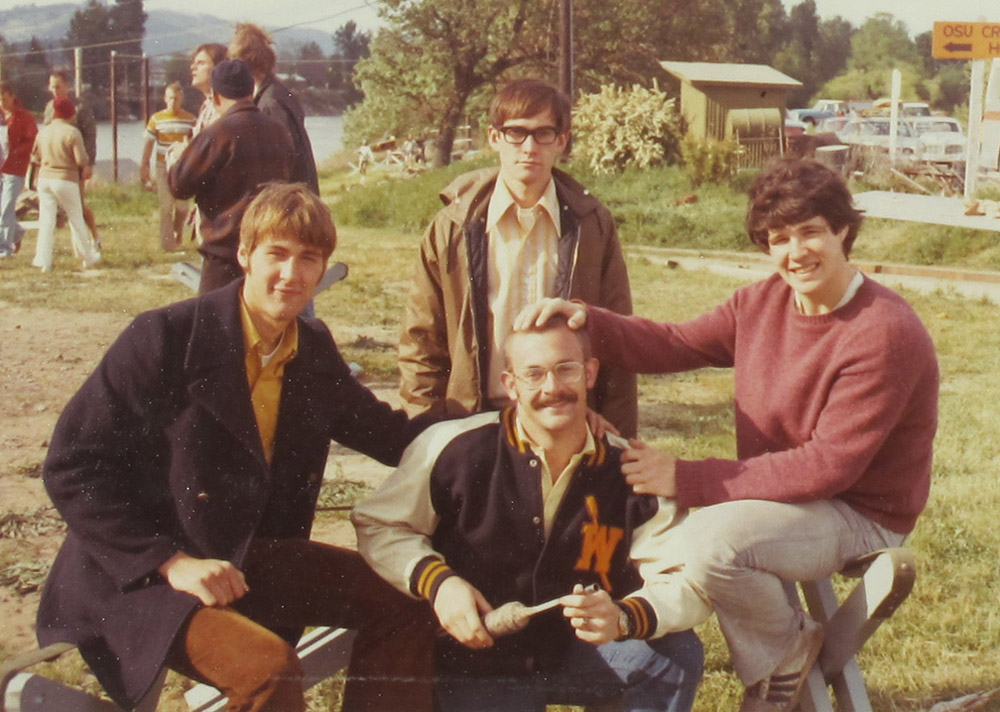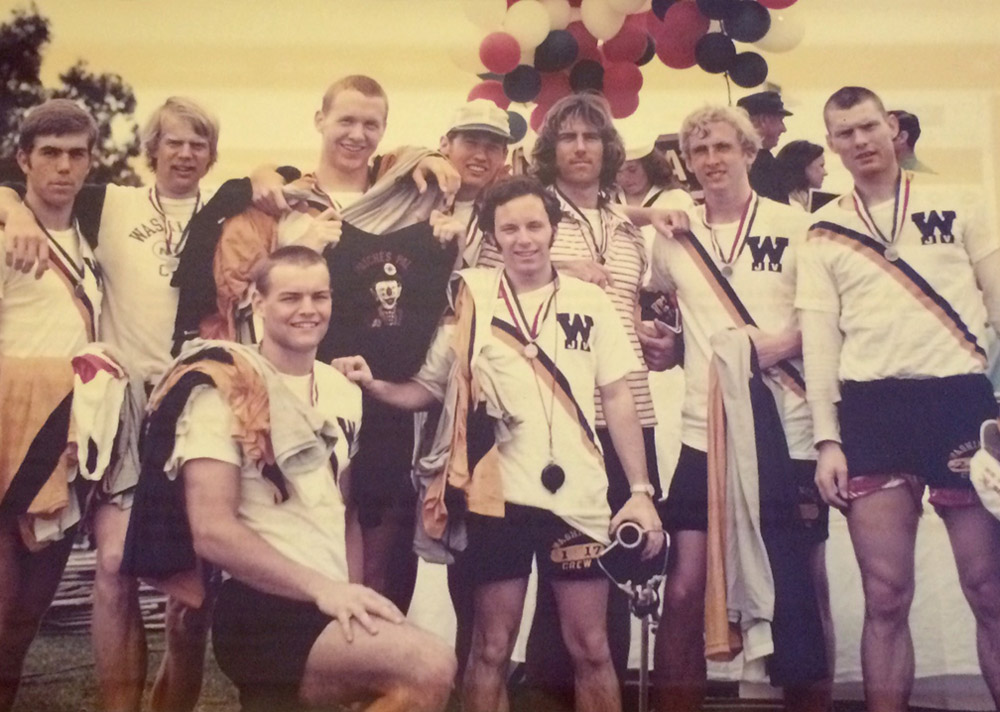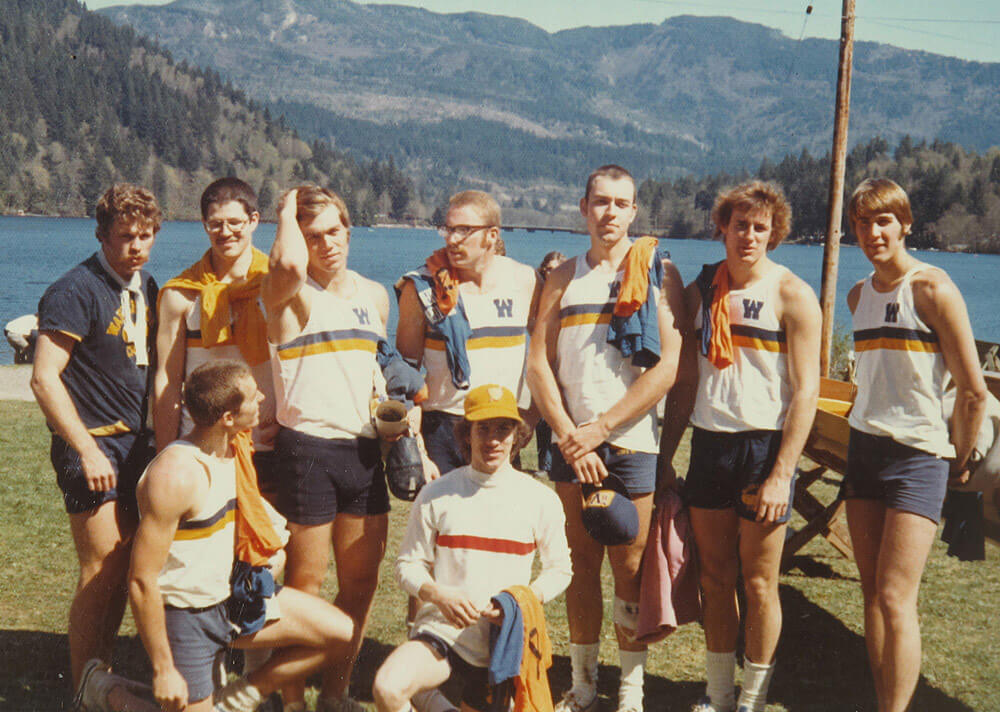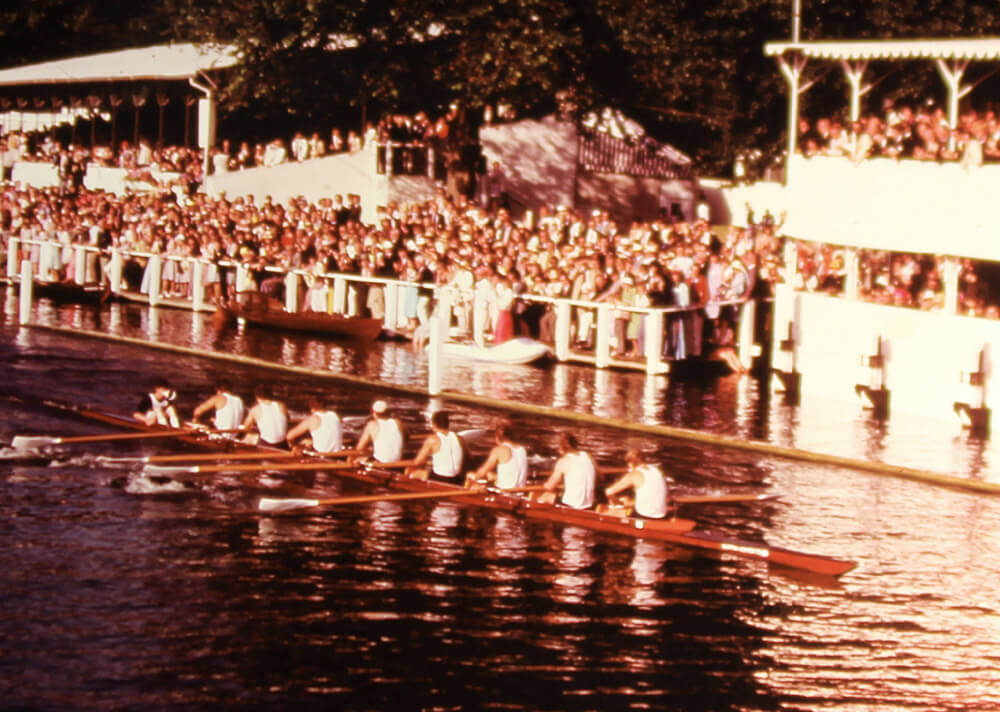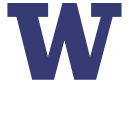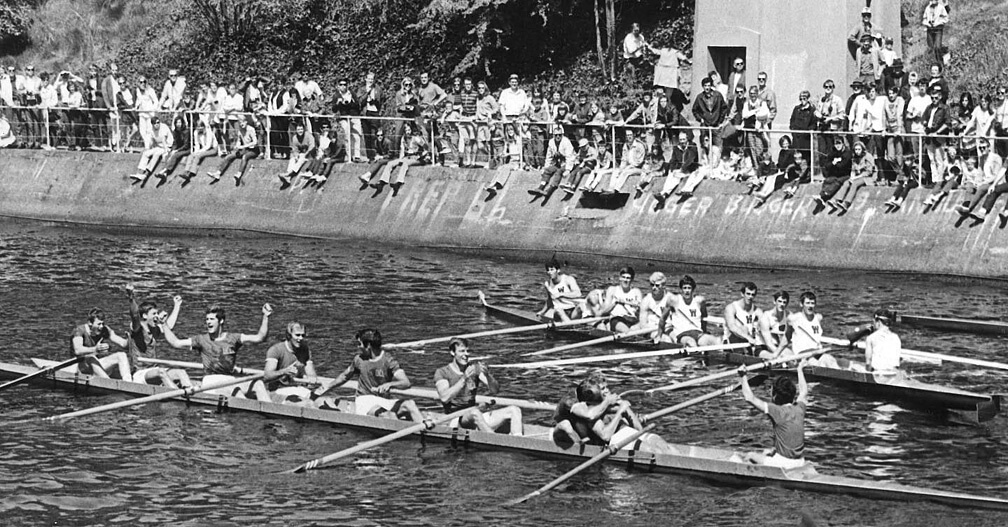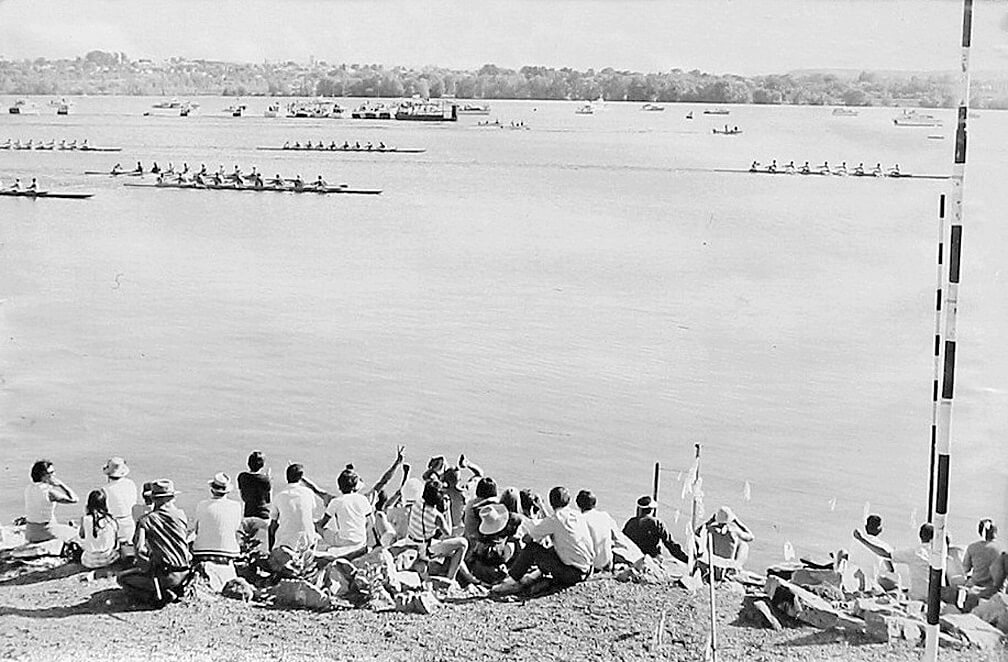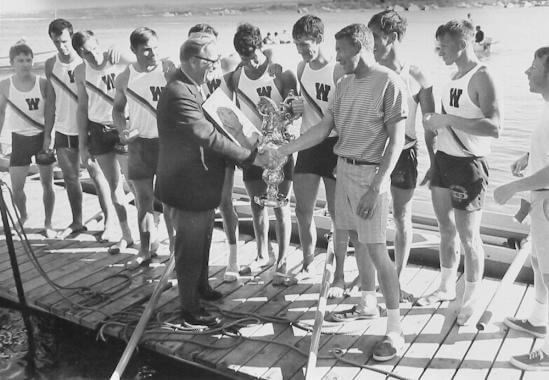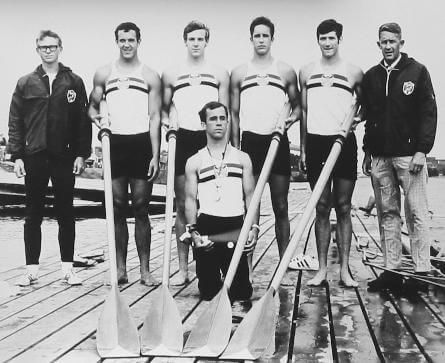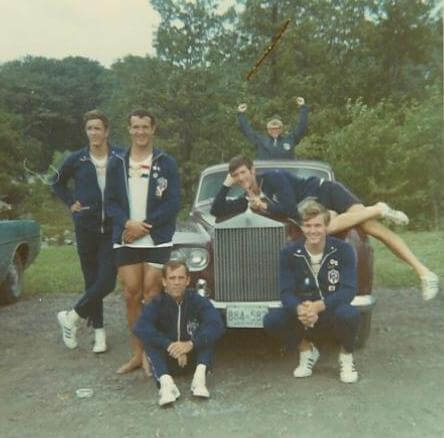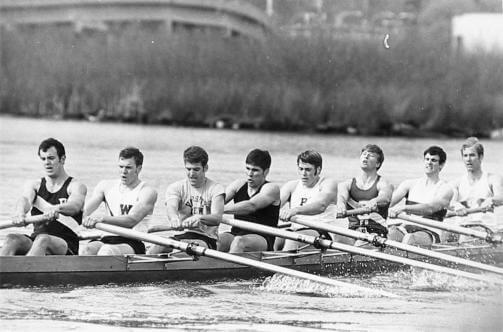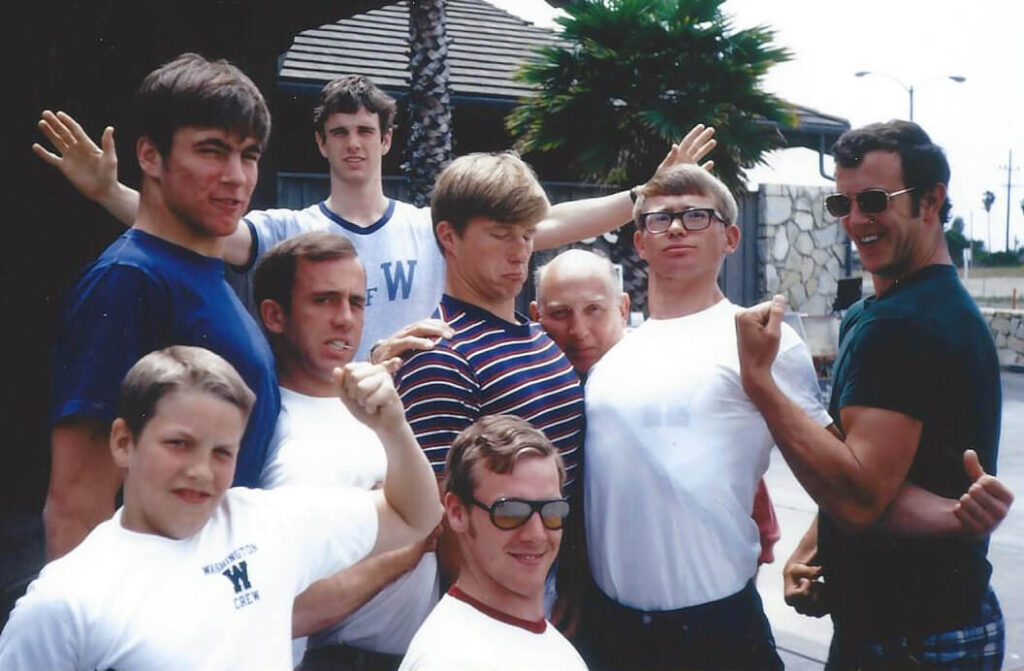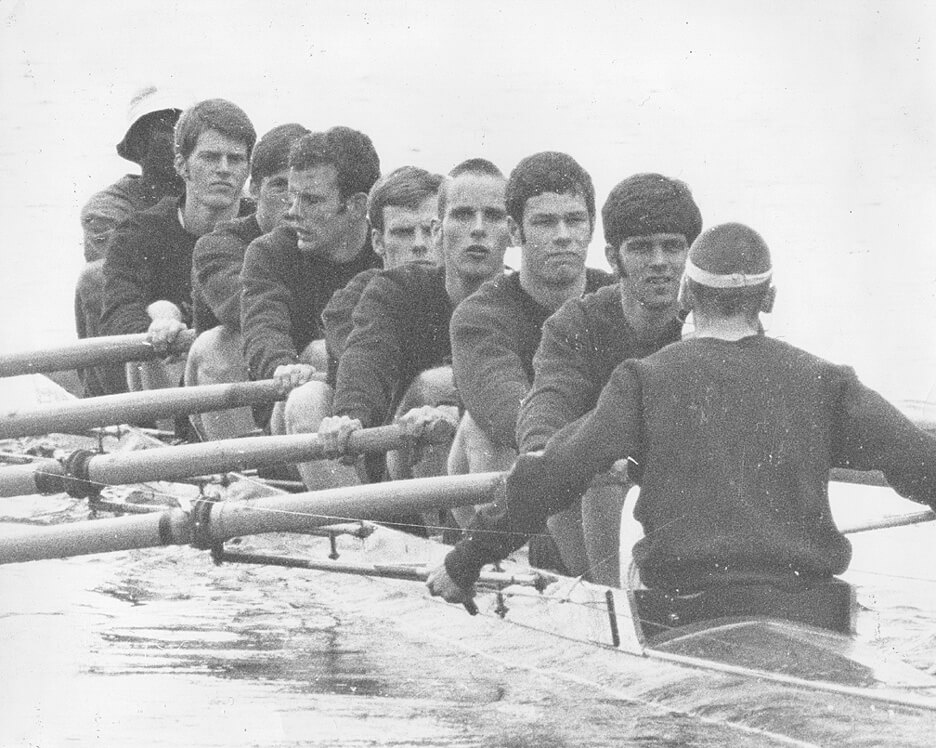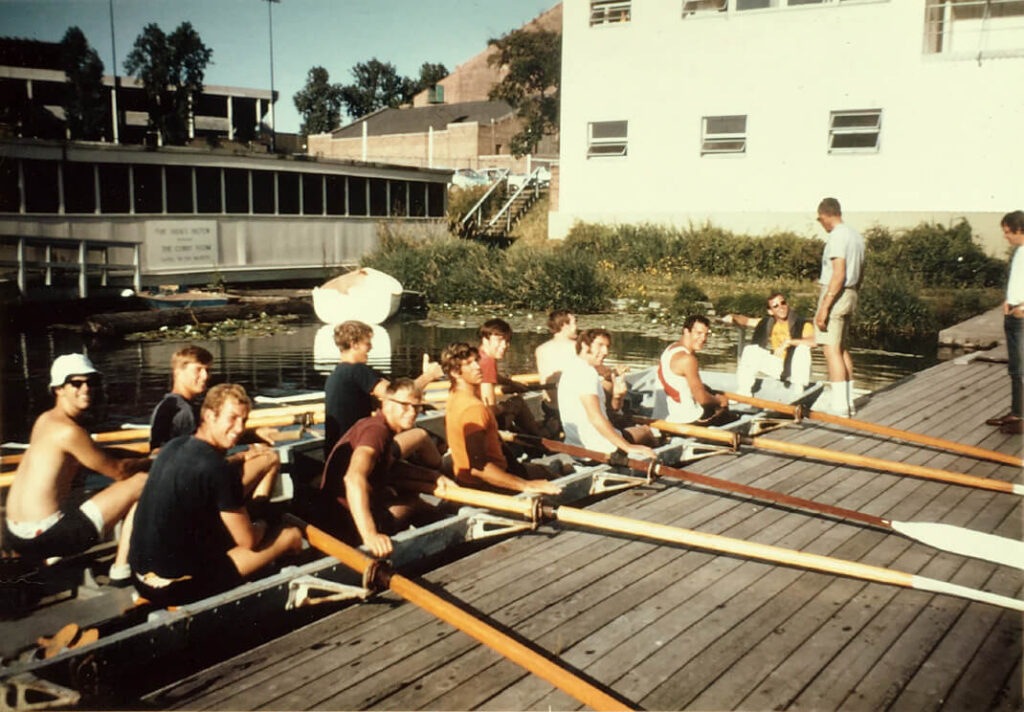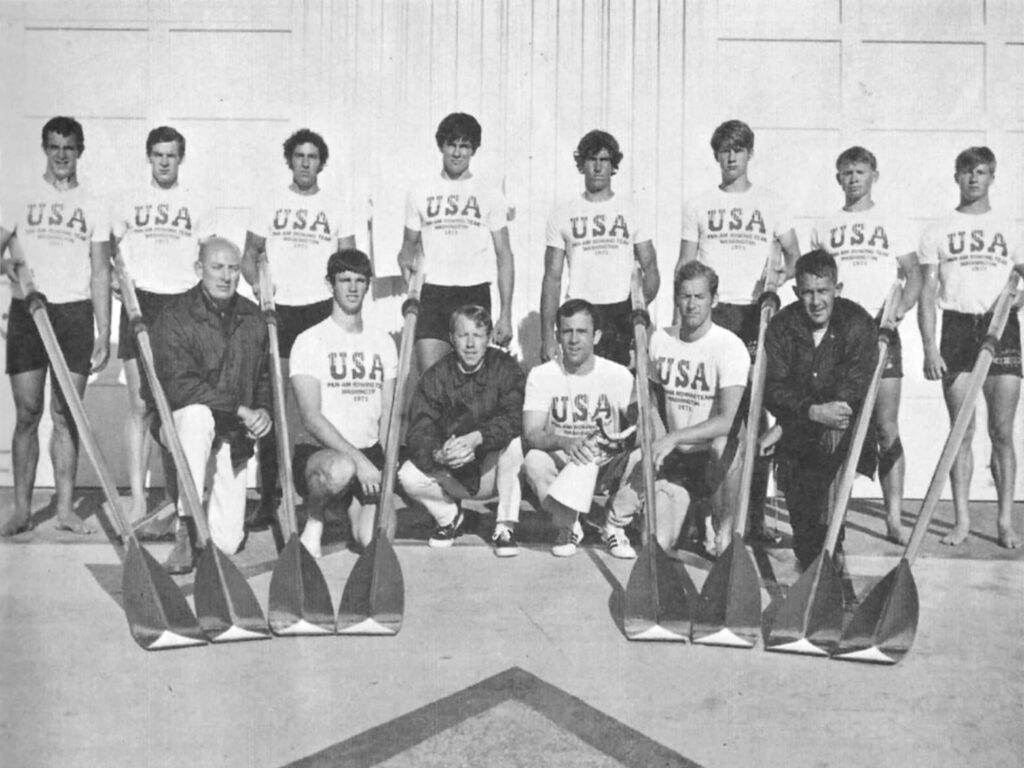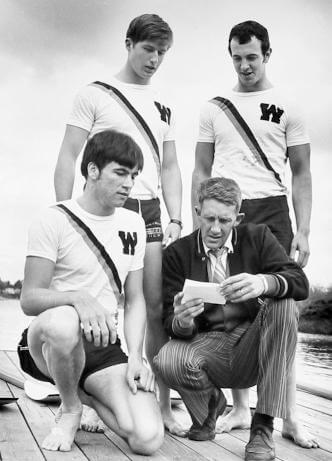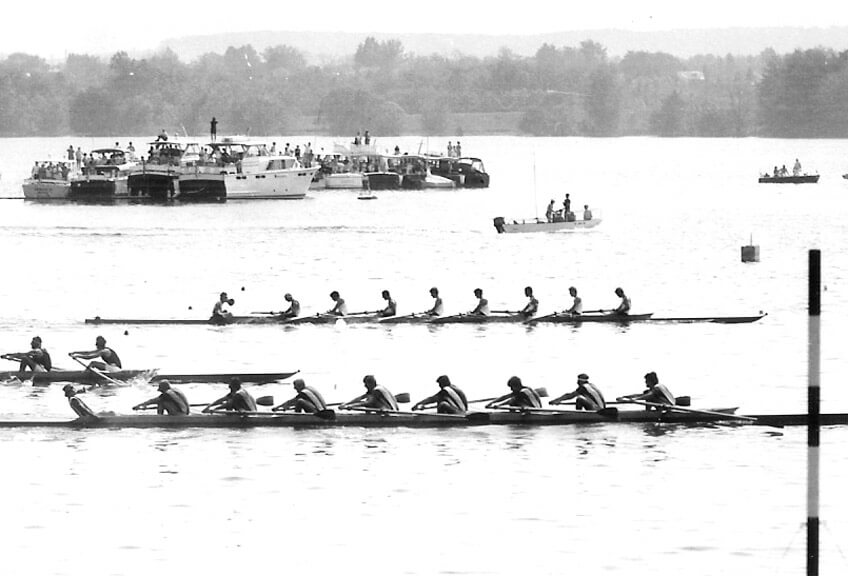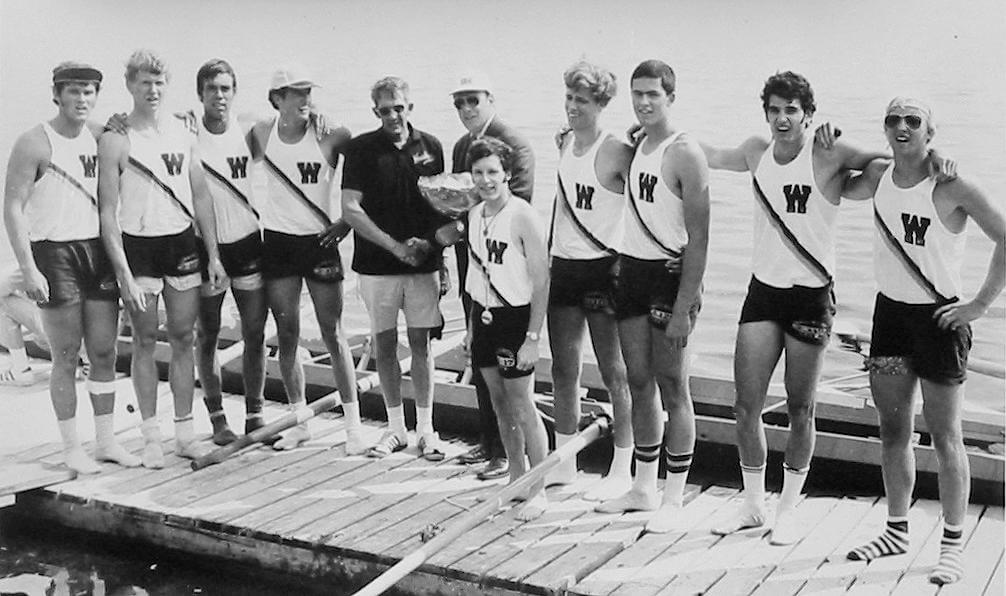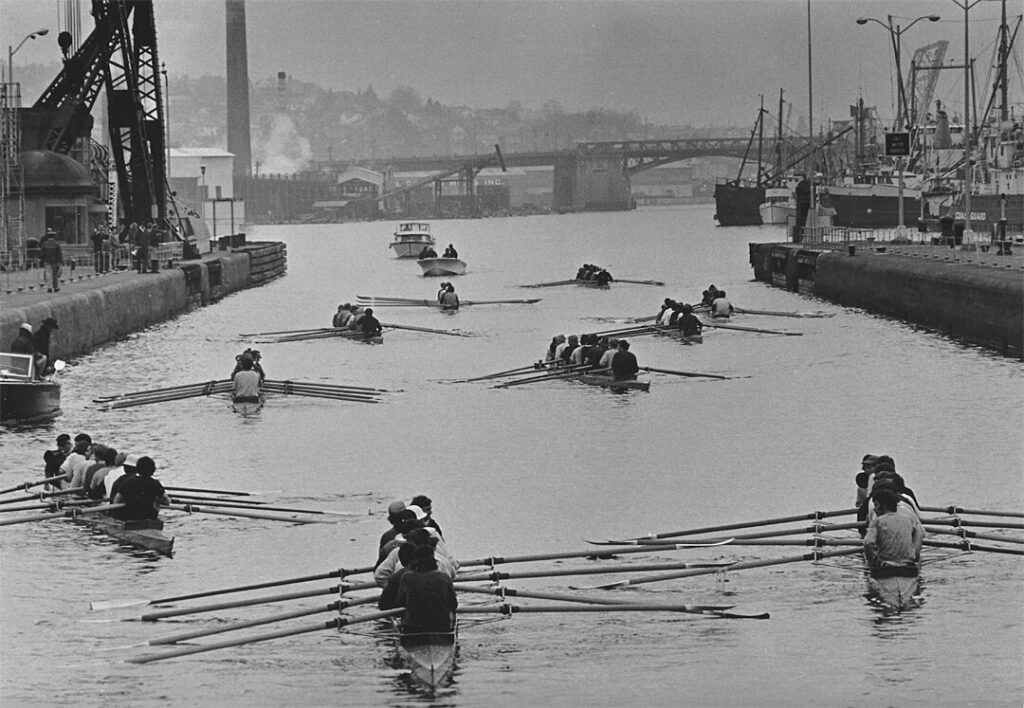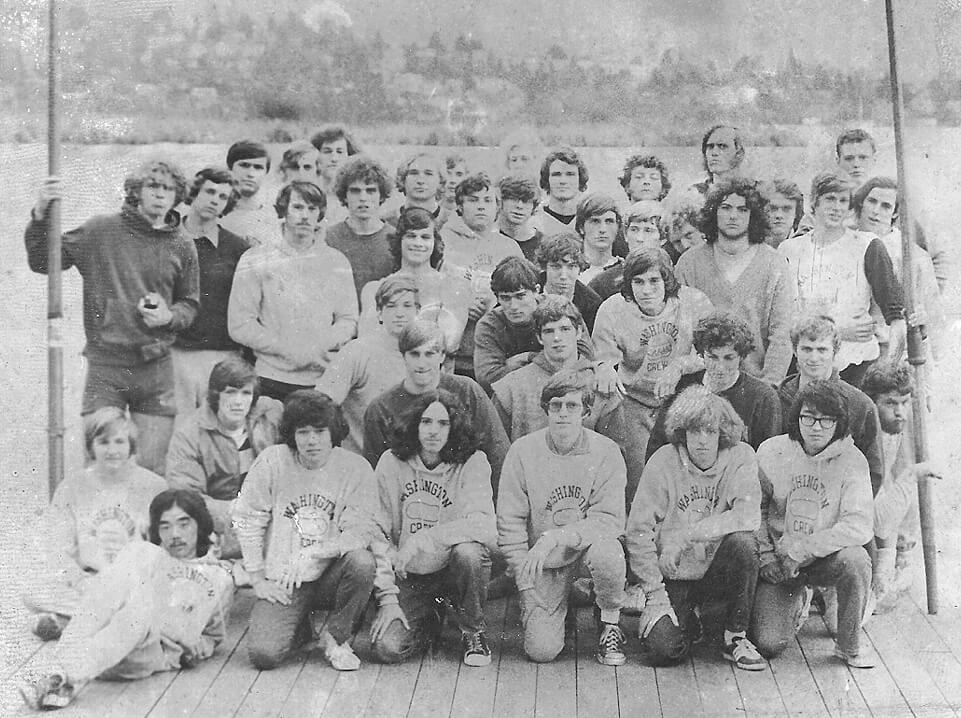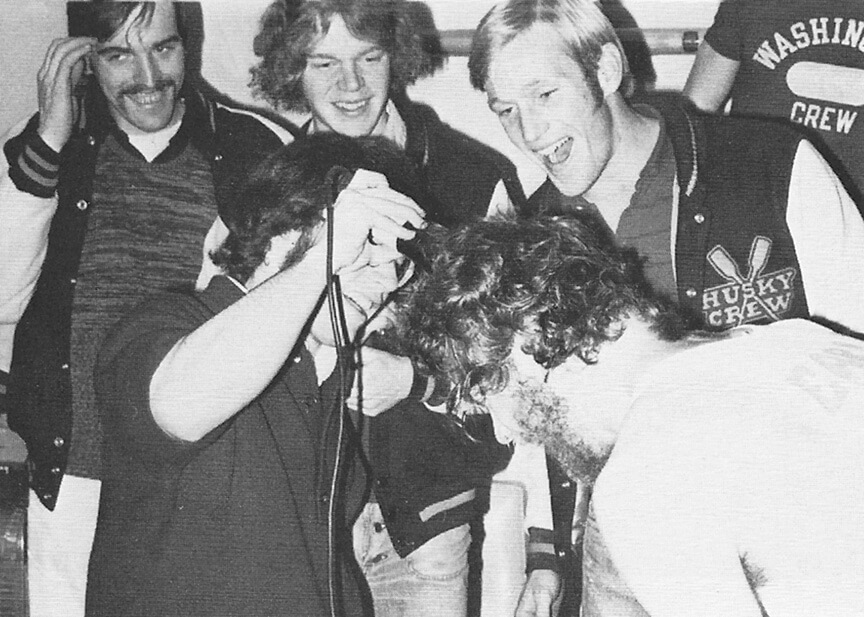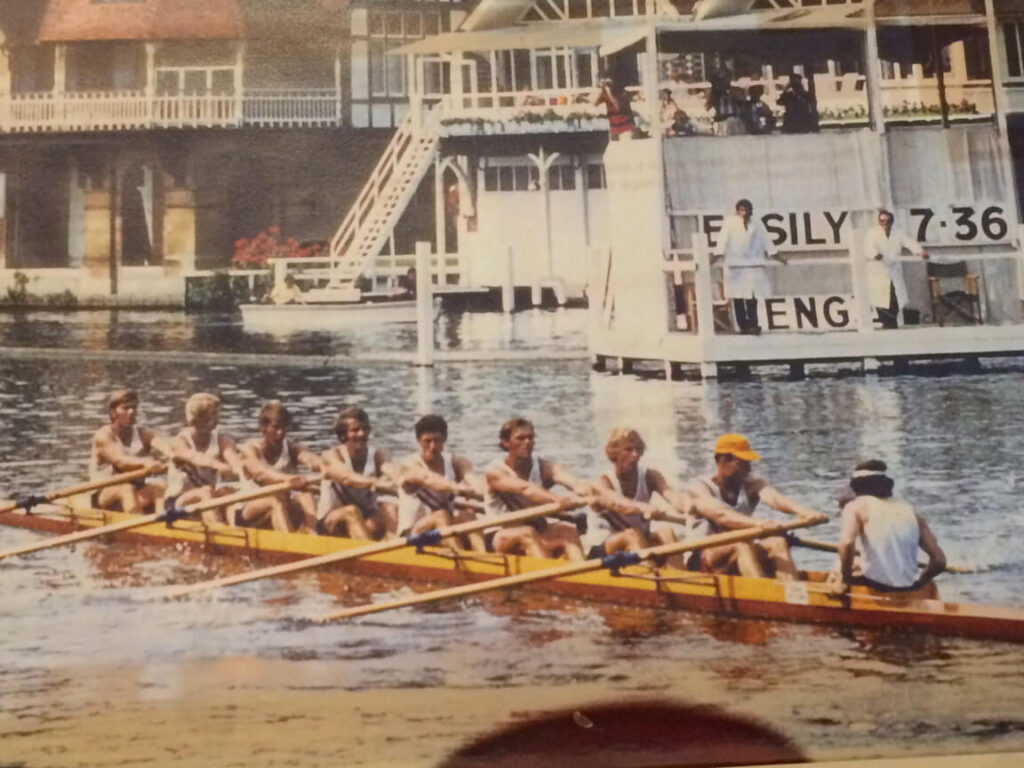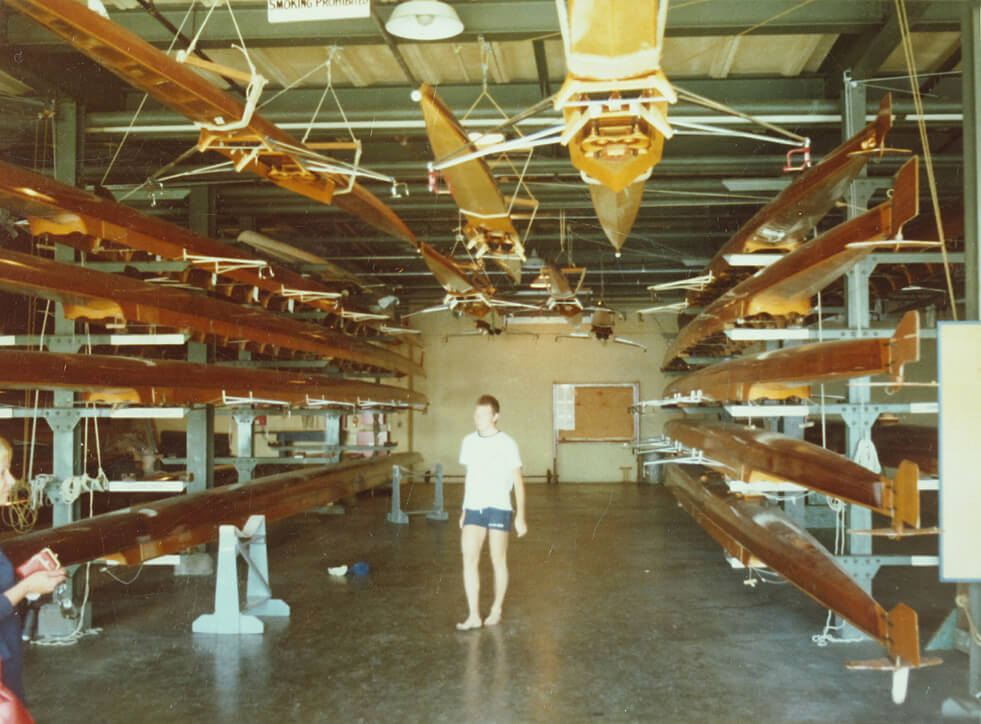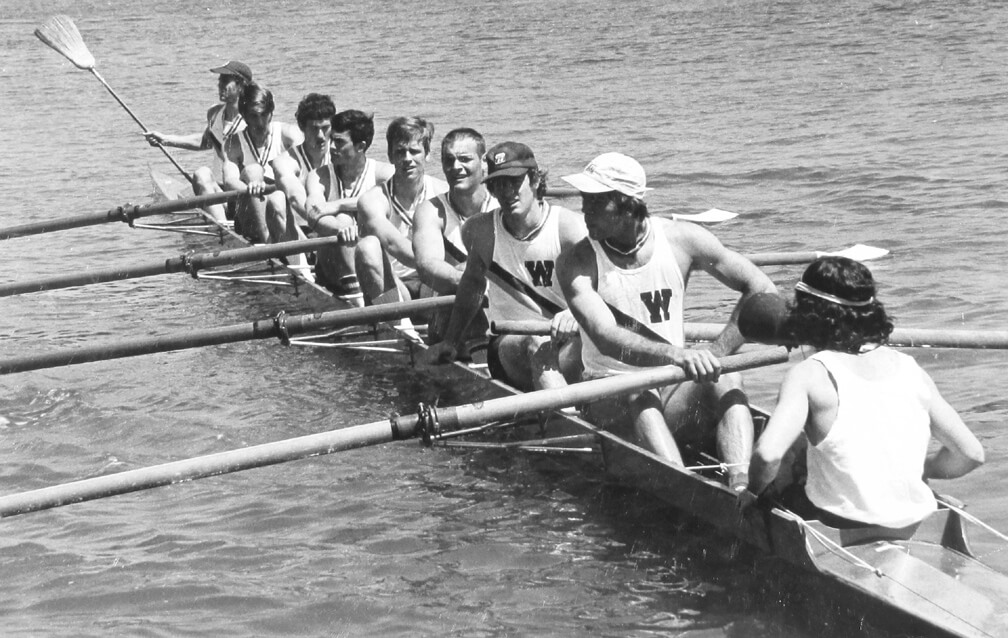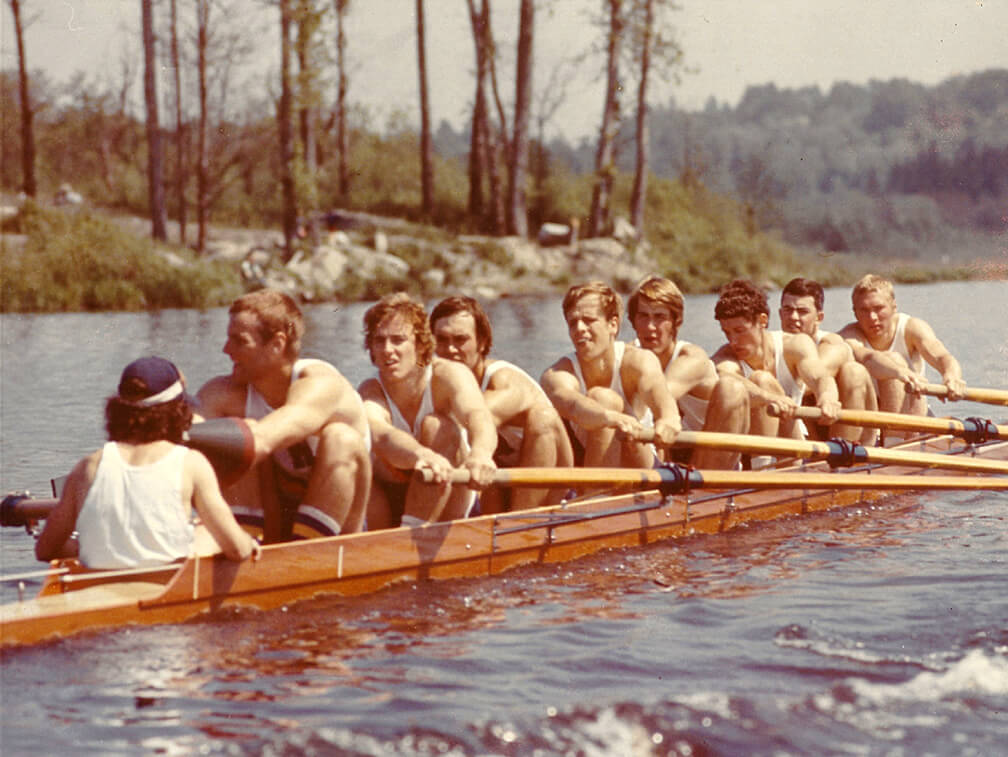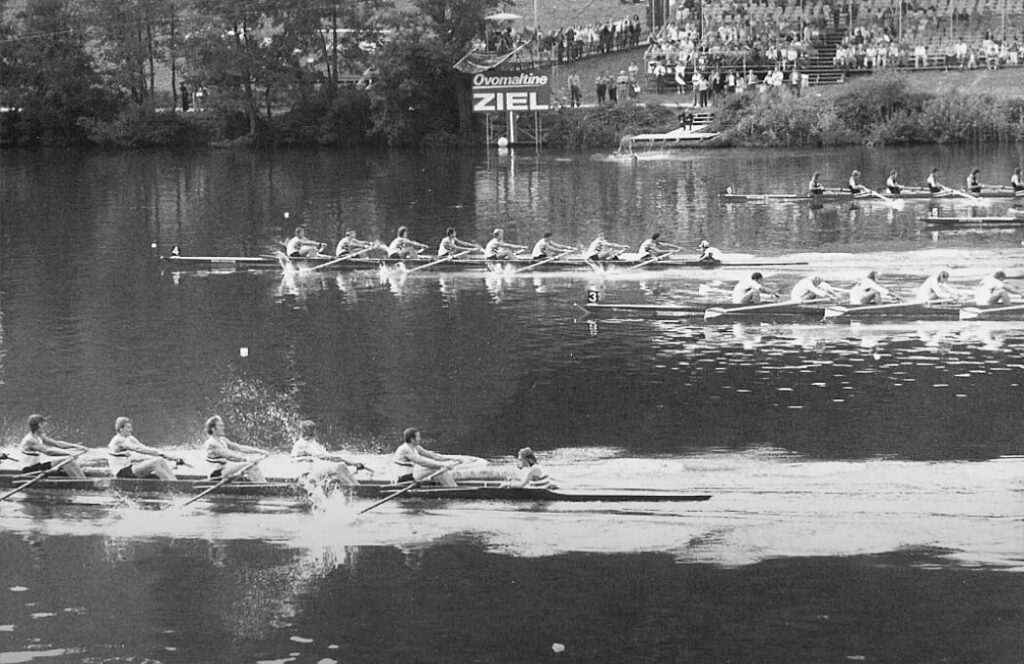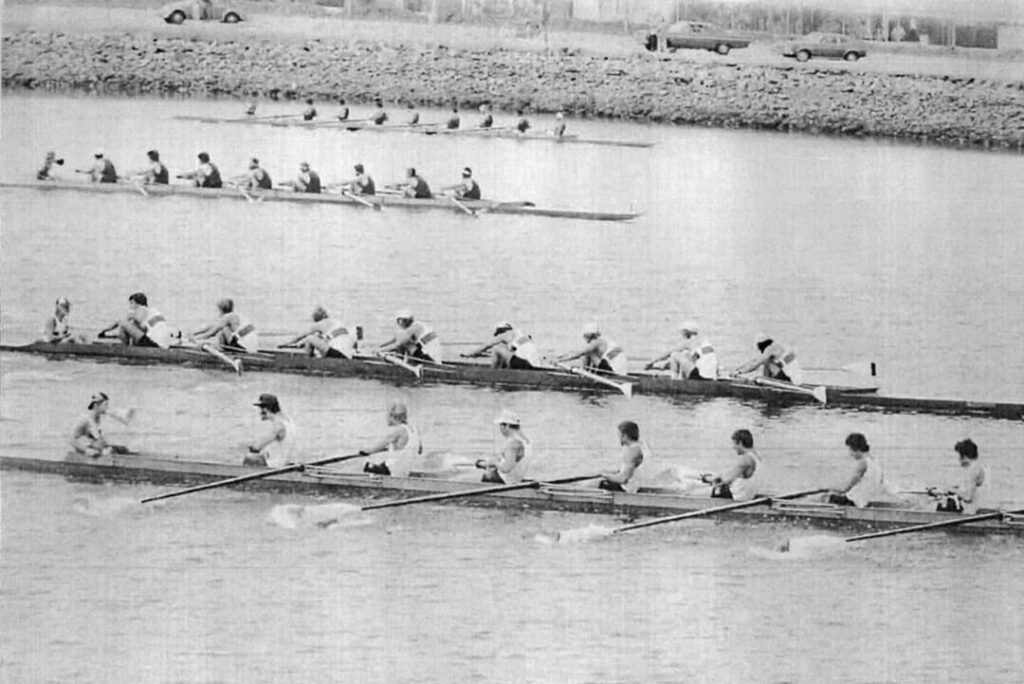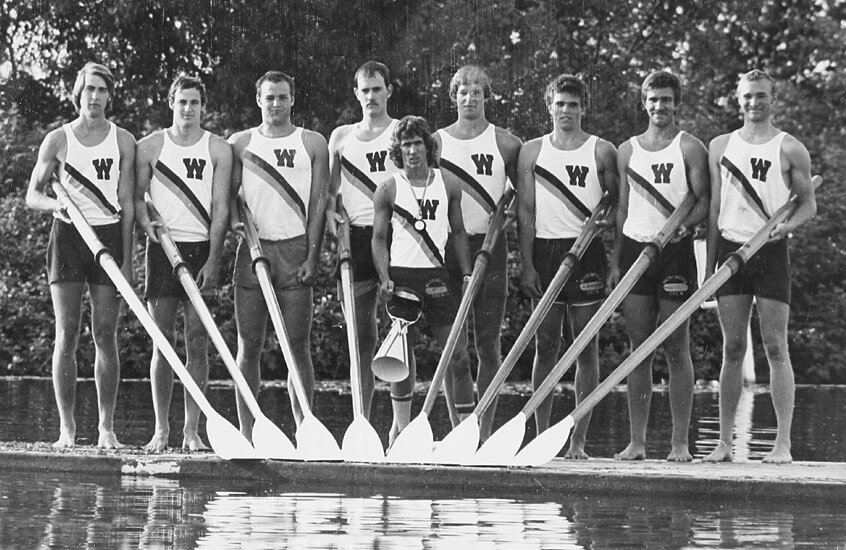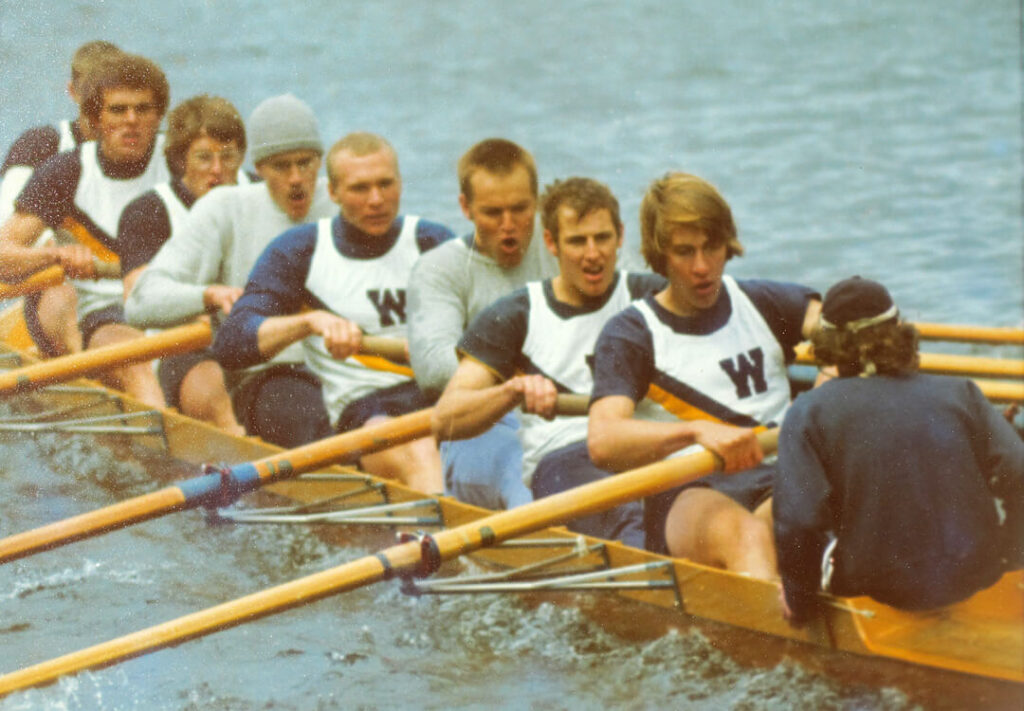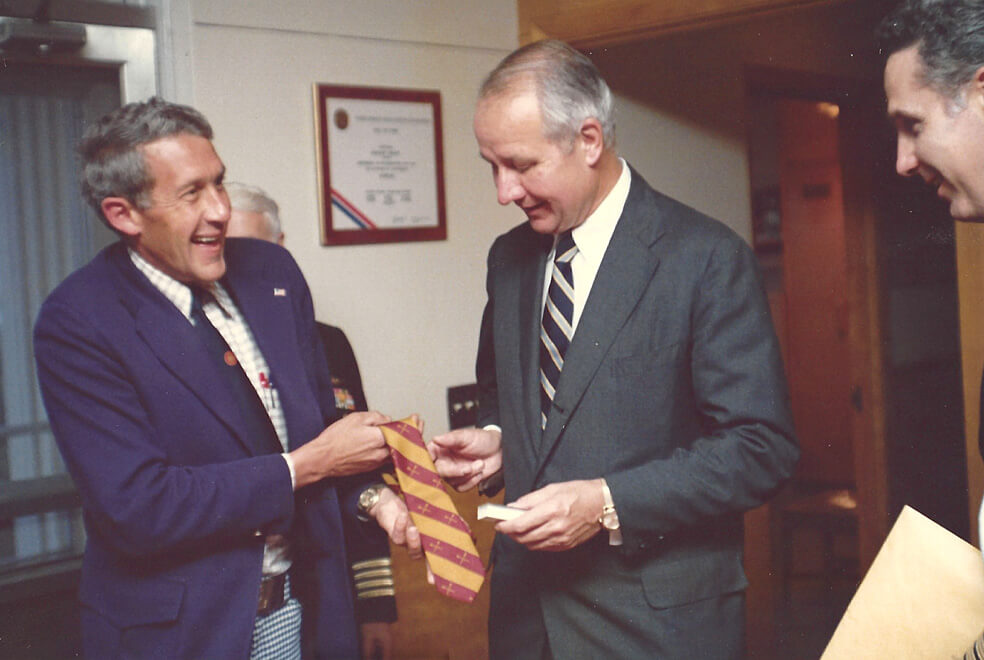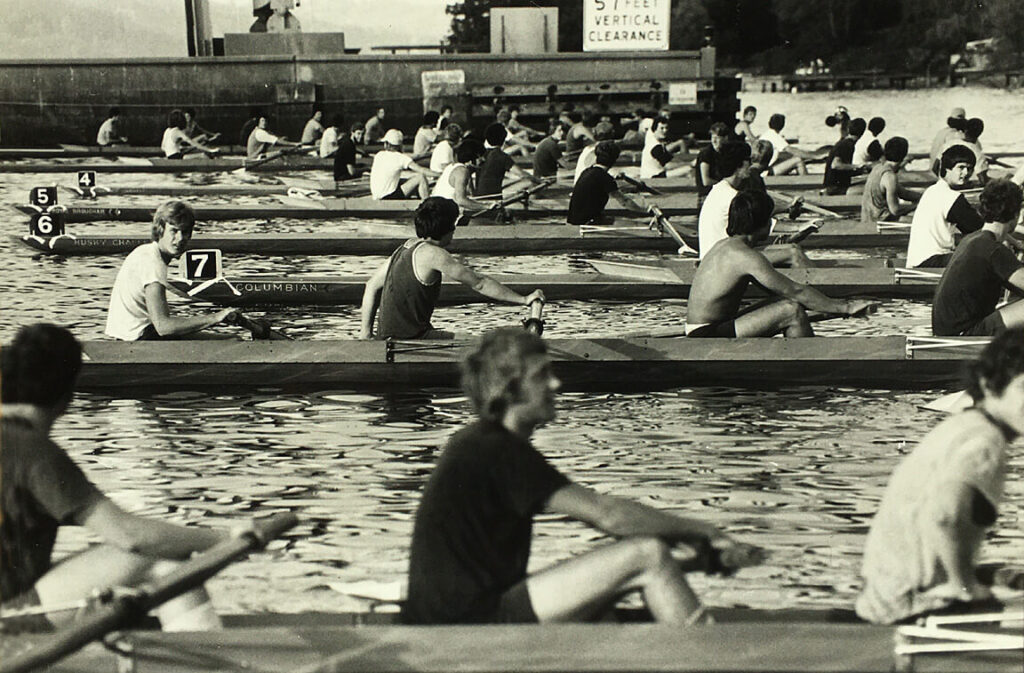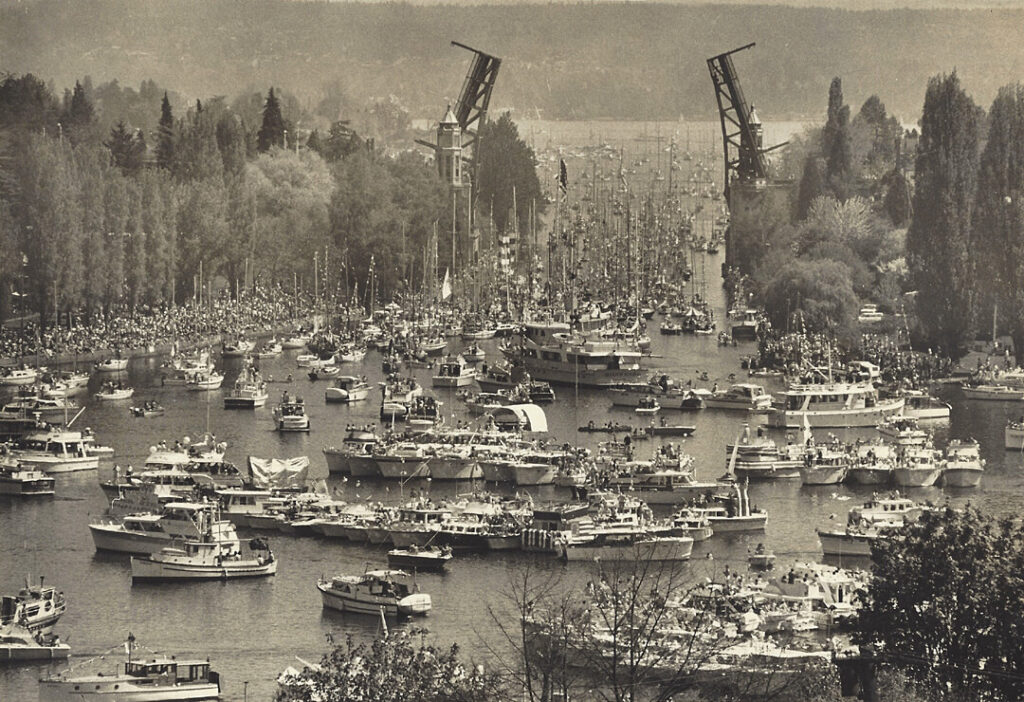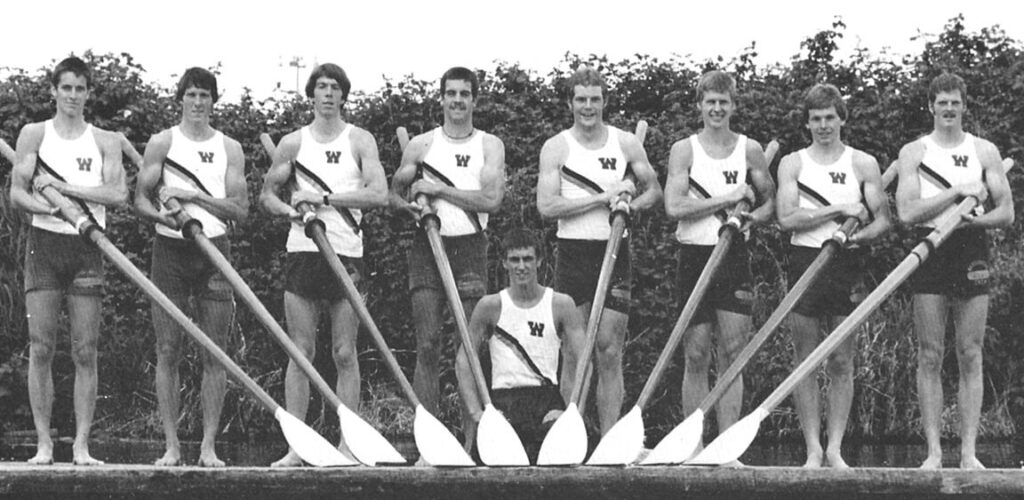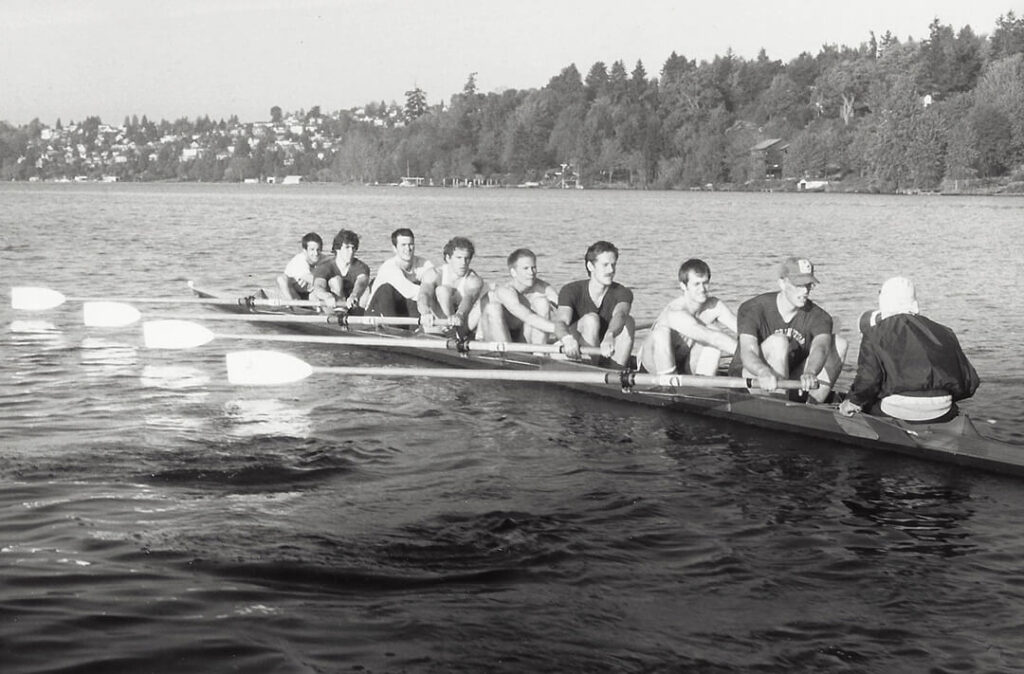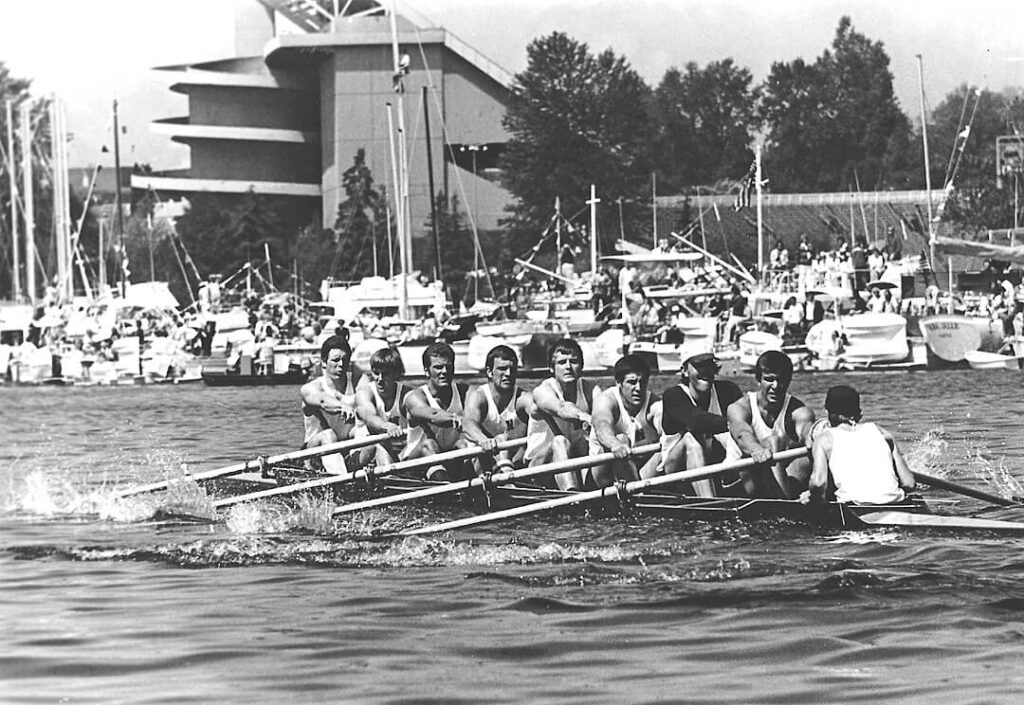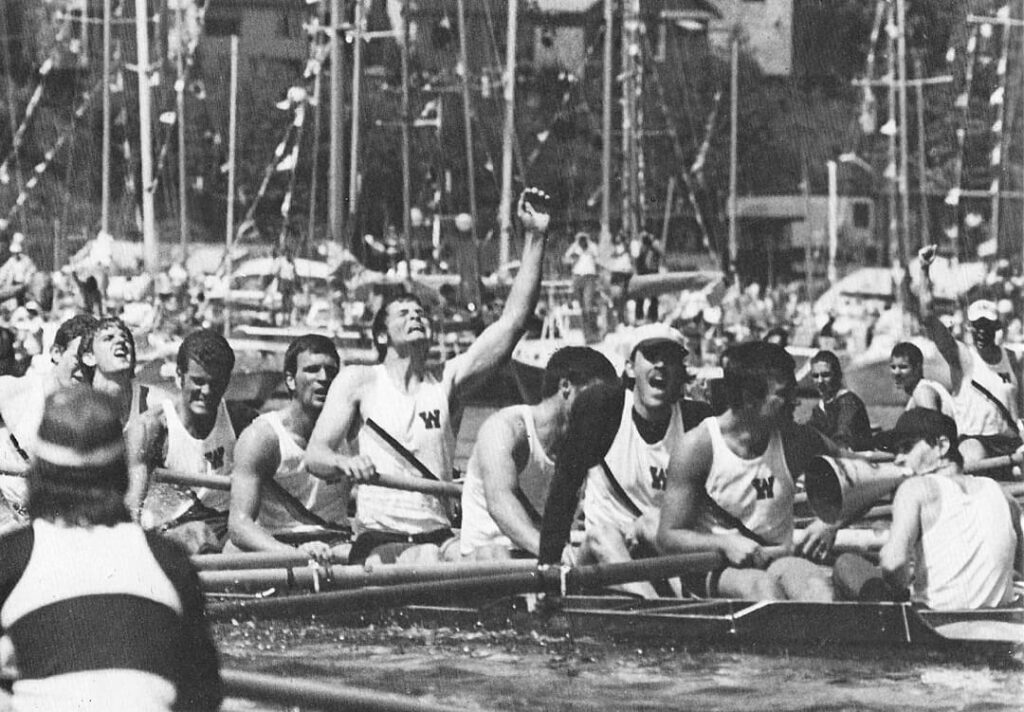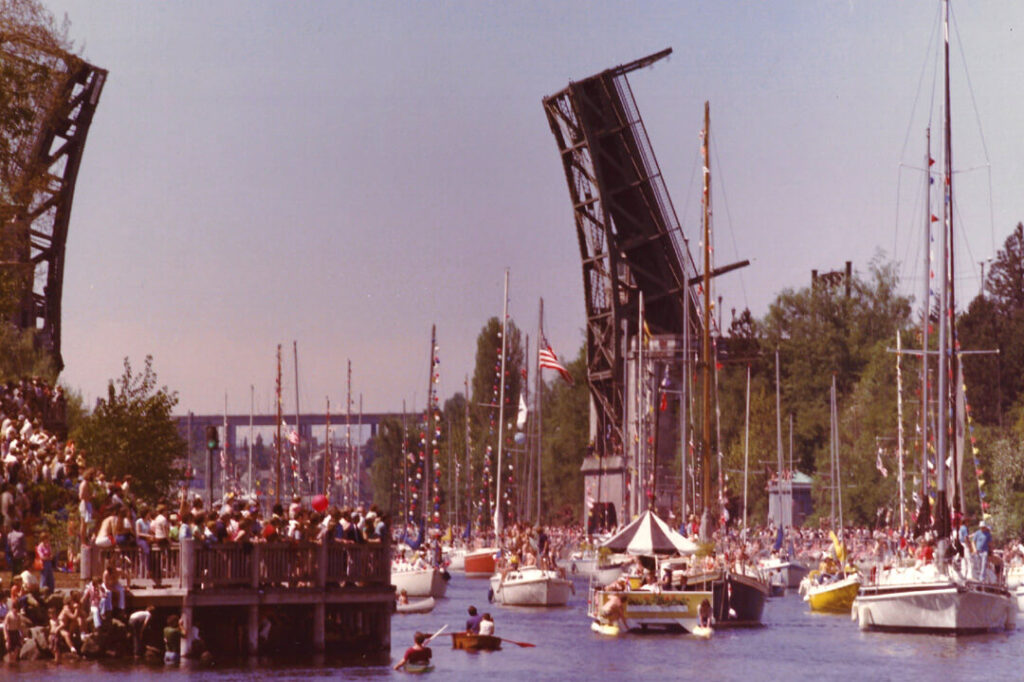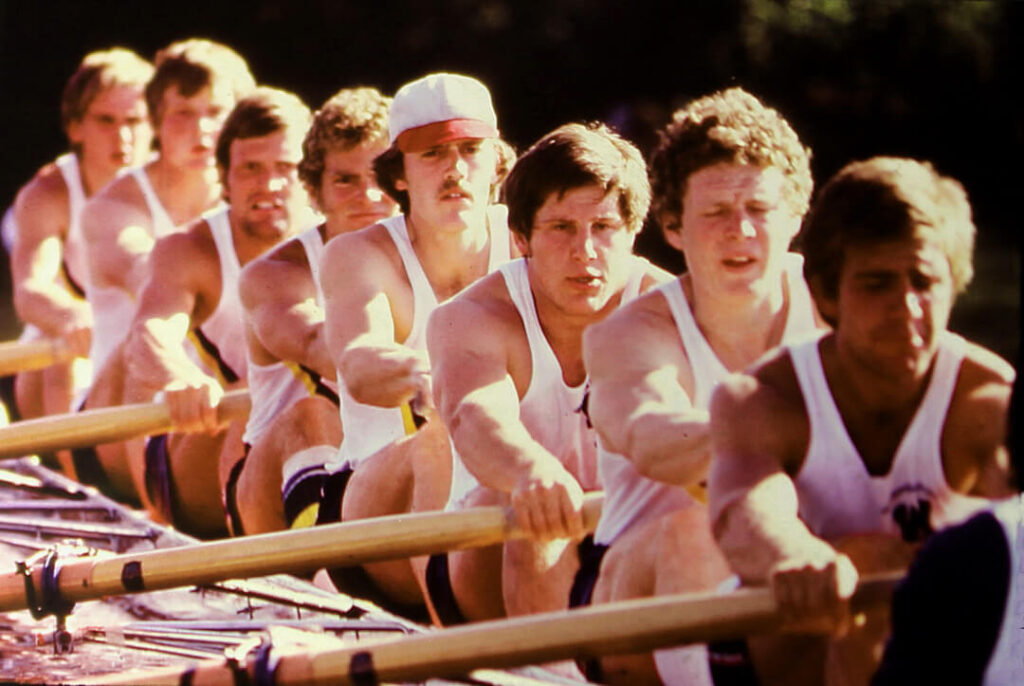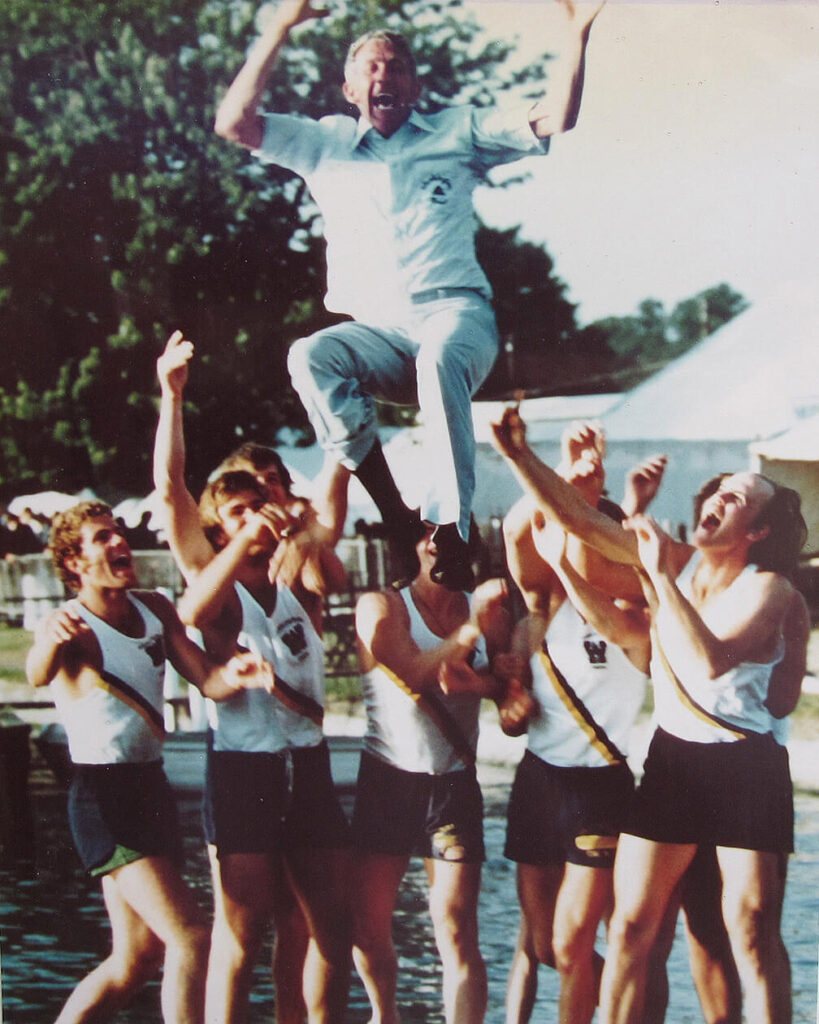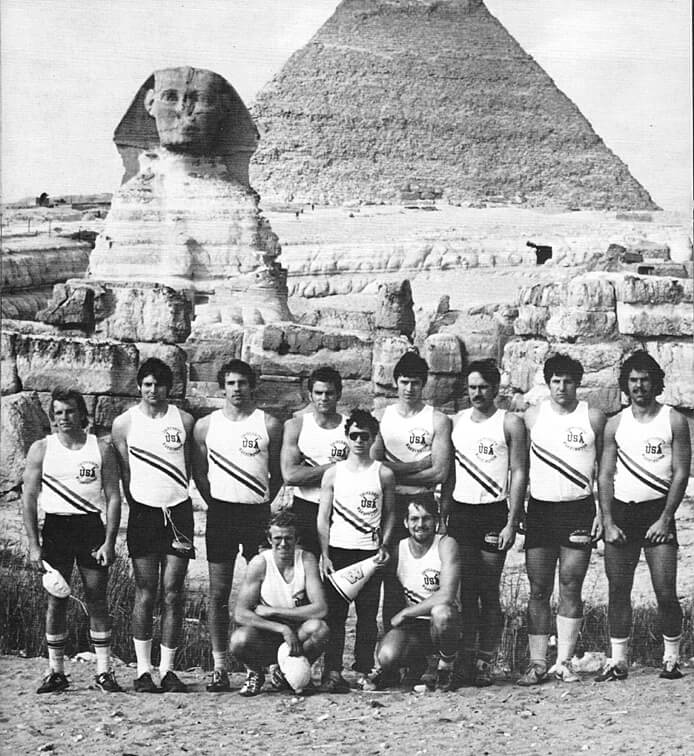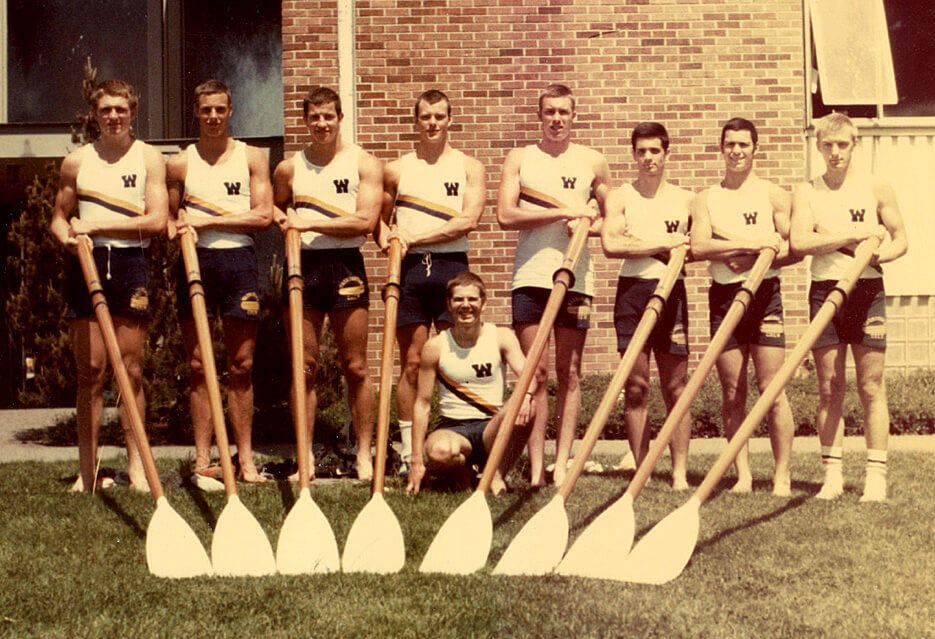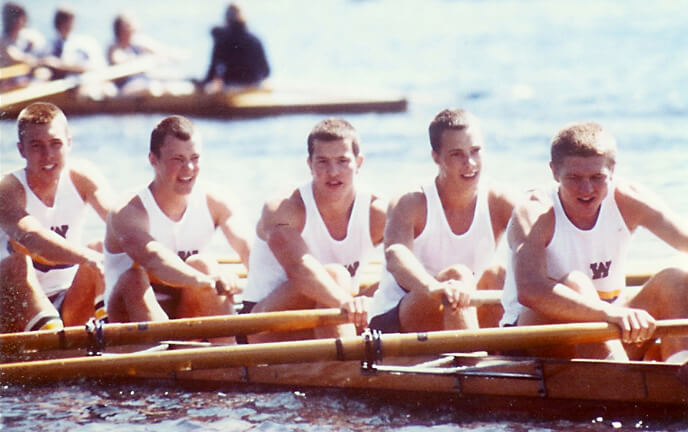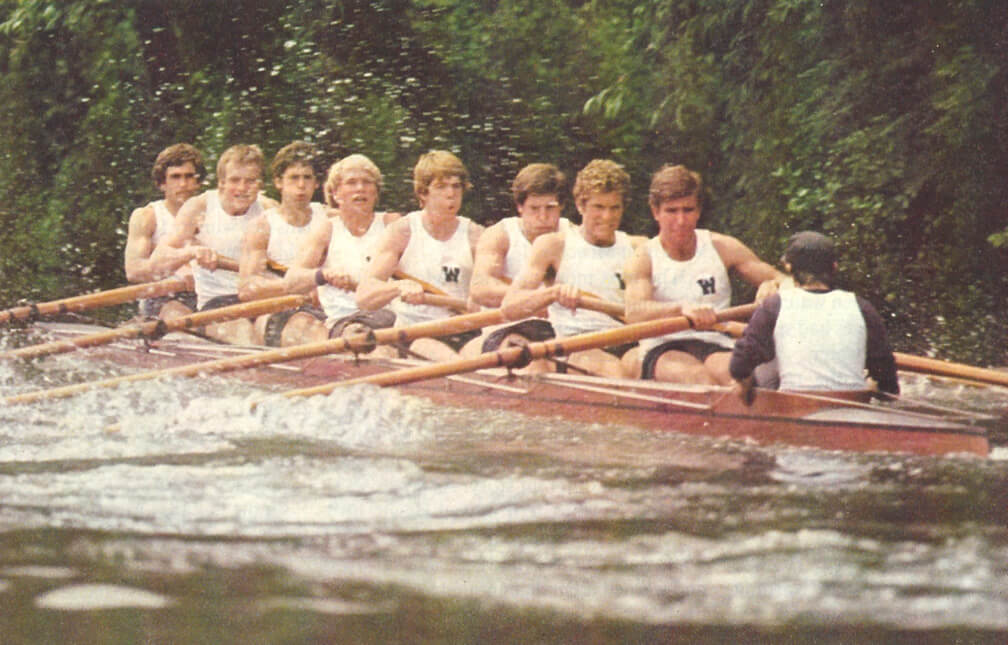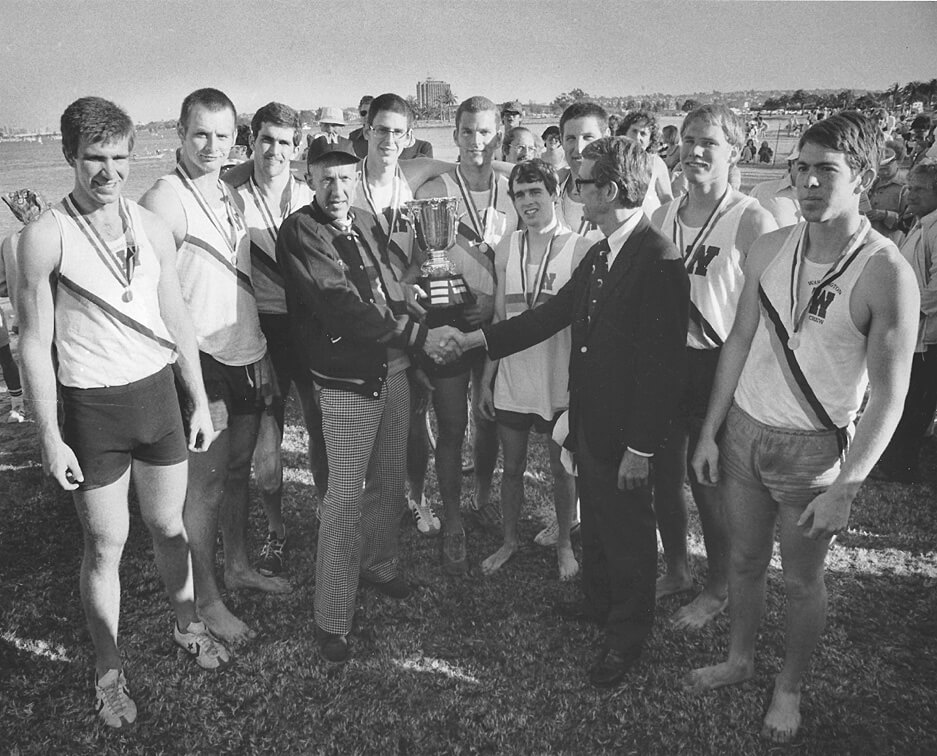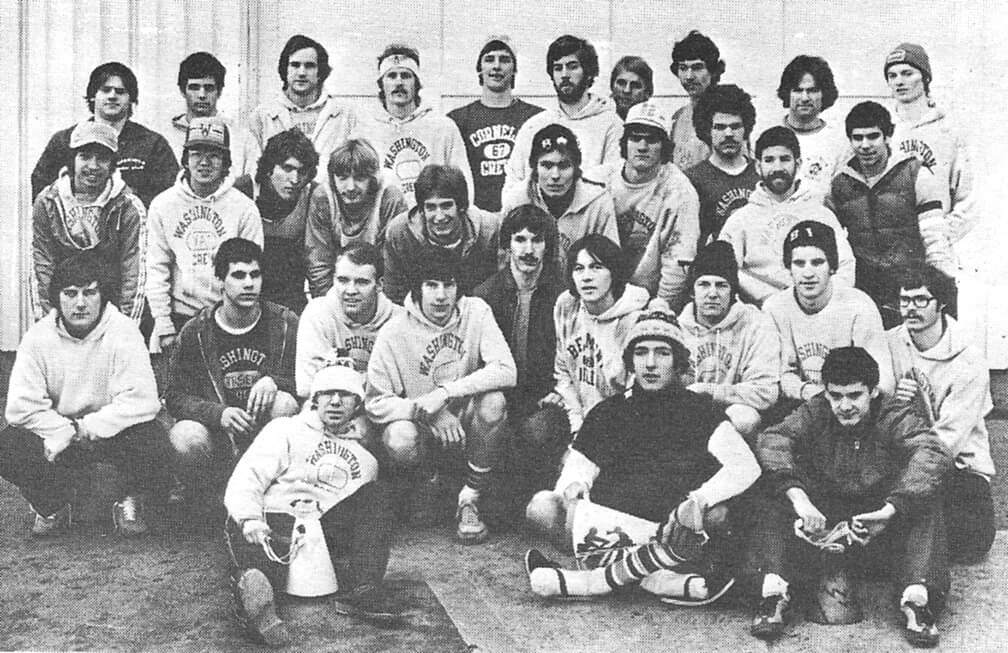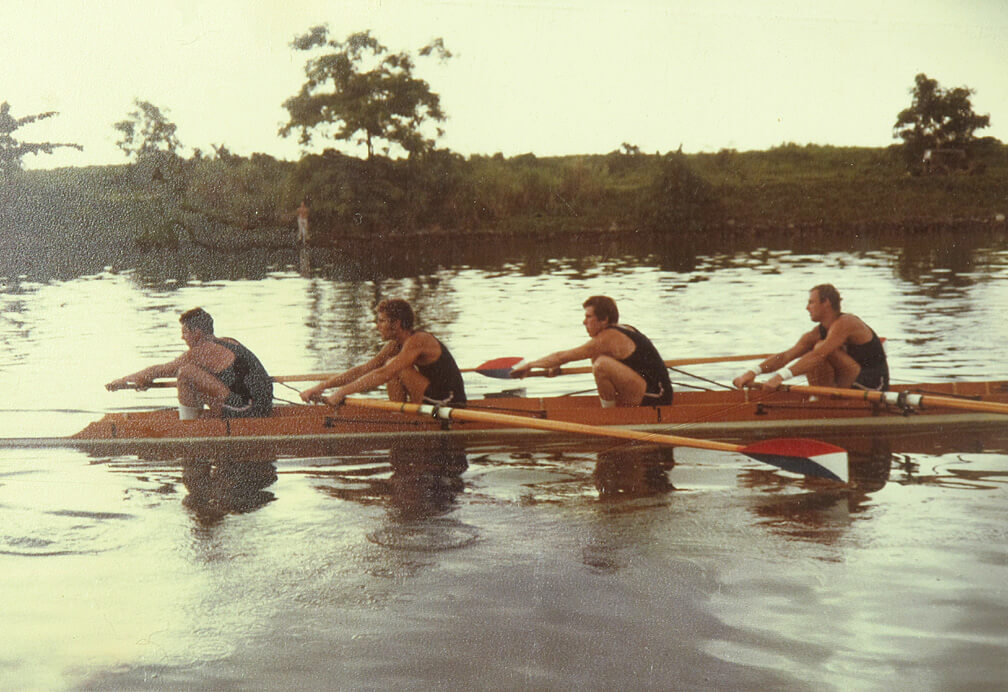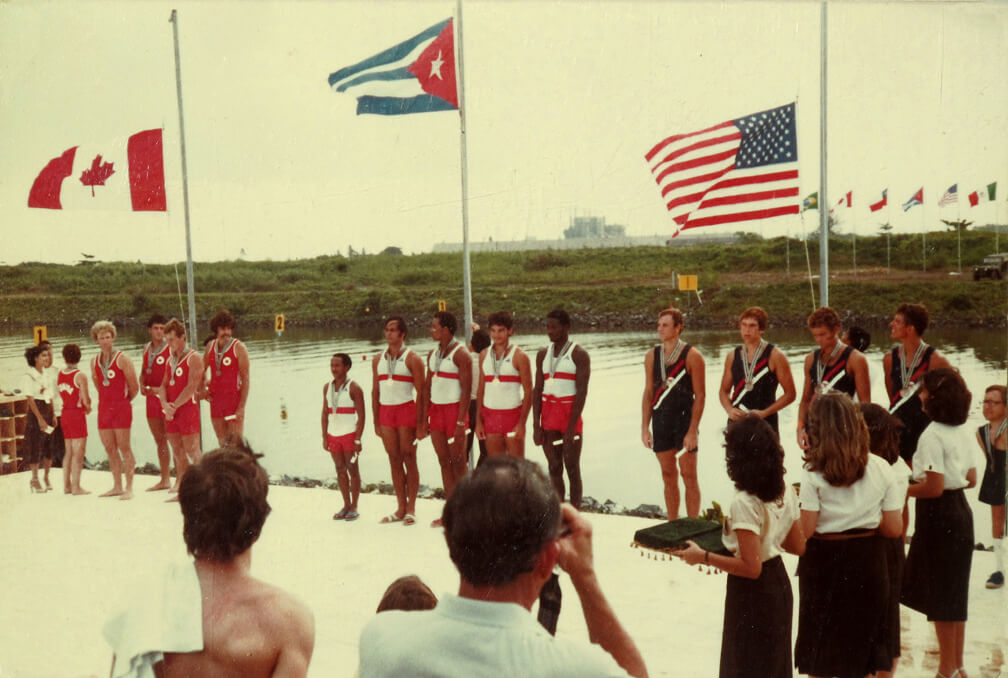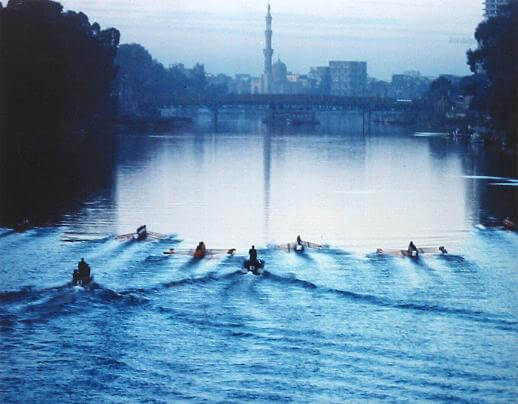Men's Crew:
1970-1979
The late 60’s leading into 1970 represented the peak of campus protest and unrest, with escalating disruption making a profound impact on every student there. Even the crewhouse – as hidden away as possible – was close enough now as the demonstrations expanded beyond the previous boundaries of campus. The Seattle Times, in their 1996 Centennial Series, documents this time on campus and the streets of Seattle in the article Outrage and Rebellion.
Meanwhile Dick Erickson was not-so-quietly pronouncing it business as usual at the Crewhouse. The middle of Lake Washington was about as far as one could get away from the distractions and Erickson liked it that way. He also liked to plan for the future, and as such his own values would ultimately shape the coming decade. Competition in far-off lands – a dream that had come true for him as an athlete – was high on his priority list, as well as re-invigorating the sport in a city that had been so supportive in years past.
Hard to know whether the vision he had of what rowing could be at Washington – and in the city of Seattle – was how it exactly played out, but by the end of the decade it was Erickson who had built Opening Day into a showcase for the sport, re-established Women’s rowing at the University, and taken his crews to four different continents to race. Not unlike Conibear himself, Erickson shared many of the same personality traits: passion for the sport, passion for teaching, part crew coach, part salesman, part evangelist, part enigma. And like Conibear, he ultimately, fundamentally, changed the course of rowing at Washington.
But for Erickson, out in the middle of Lake Washington in the spring of 1970, there was also the season ahead to consider. And with a returning nucleus of experienced young men, the goal was simply to “compete with the best”.
